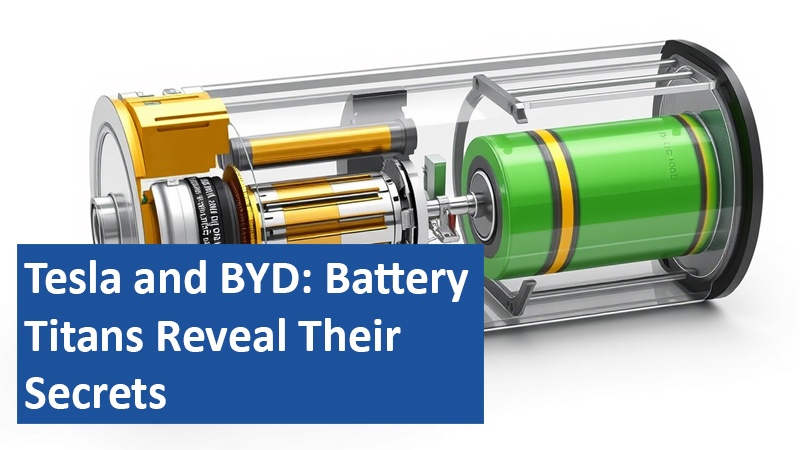
Researchers from RWTH Aachen University have conducted an in-depth analysis of Tesla and BYD batteries, uncovering significant differences in design and performance. The study, published in Cell Reports Physical Science, sheds light on the contrasting approaches of these electric vehicle giants. This groundbreaking research offers valuable insights into the future of EV battery technology.
######################################################
Now exclusively try Amazon Prime and Prime Video free for 30 days!
##########################################################
Unveiling Battery Designs
Tesla’s 4680 cell and BYD’s Blade cell represent two distinct philosophies in battery design. The Tesla cell, cylindrical and tabless, prioritizes high energy density and rapid power delivery. In contrast, BYD’s prismatic Blade cell focuses on space efficiency and improved thermal management. Both manufacturers use graphite anodes, surprisingly omitting silicon, a material often touted for increasing energy density.
Performance Metrics
The study revealed striking differences in energy density between the two batteries. Tesla’s 4680 cell achieves 241 Wh/kg, significantly outperforming BYD’s Blade at 160 Wh/kg. This translates to potentially longer range for Tesla vehicles. However, BYD’s design excels in thermal regulation, allowing for sustained high performance without overheating, which could benefit battery longevity and safety.
Manufacturing Innovations
Both companies employ advanced manufacturing techniques, with laser welding being a common thread. Tesla’s streamlined process eliminates traditional tabs, while BYD combines ultrasonic and laser welding for electrode connections. The researchers noted that BYD’s approach to materials and construction could lead to lower production costs, potentially making their EVs more affordable without compromising reliability.
Future Implications
The findings from this study have far-reaching implications for the EV industry. Tesla’s focus on energy density aligns with the demands of high-performance and luxury vehicles. BYD’s emphasis on thermal efficiency and cost-effectiveness positions them well for mass-market and commercial applications. As the EV market continues to evolve, these contrasting strategies may shape the future of electric mobility and energy storage solutions.
The ongoing competition between these battery giants will drive innovation, pushing the boundaries of what is possible in electric vehicle technology. Ultimately, consumers will benefit from improved performance, efficiency, and affordability. The race to develop superior battery technology is a key factor in the widespread adoption of electric vehicles.
What do you think will be the next major breakthrough in EV battery technology? How might these advancements impact the widespread adoption of electric vehicles?
Based on content from www.ingenieur.de and own research.